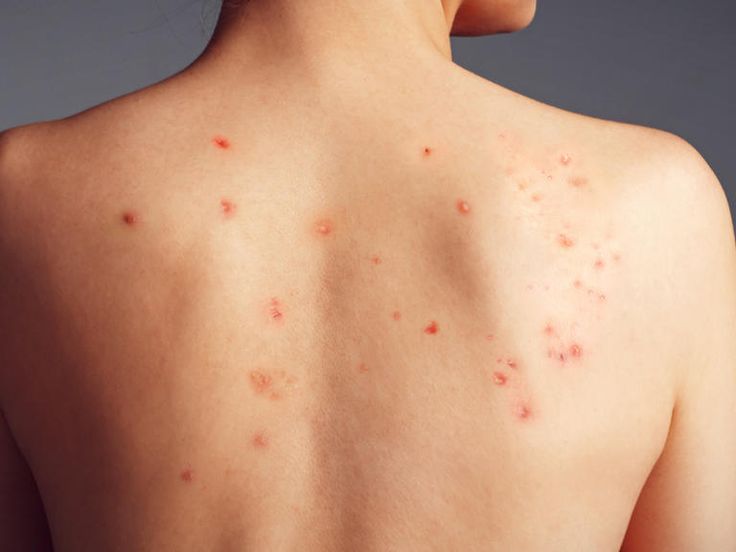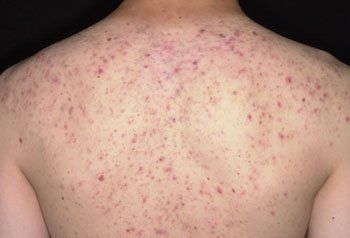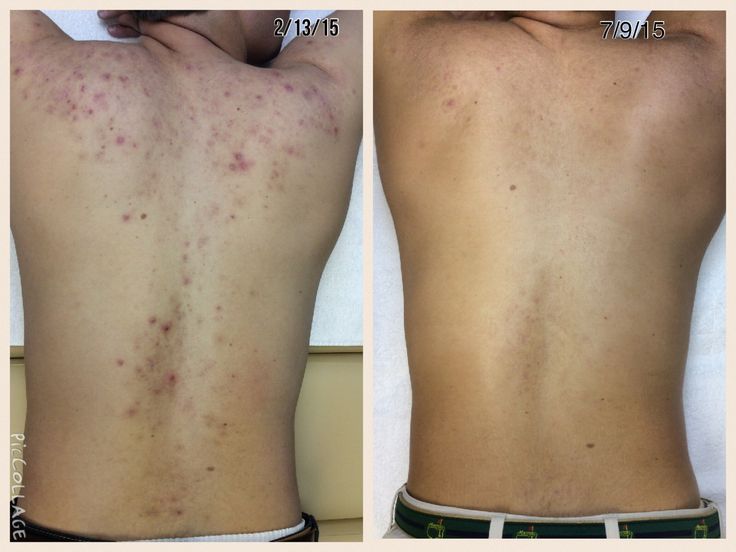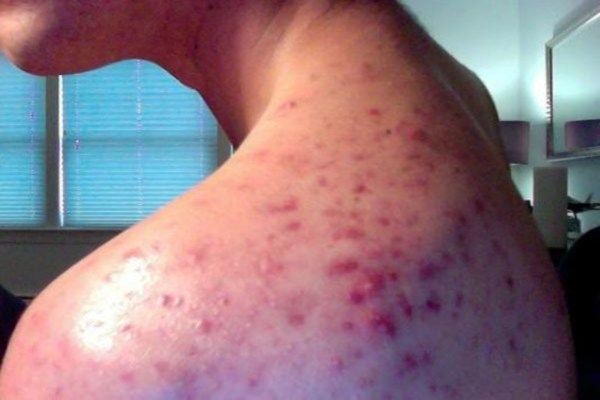
Back acne : Cuases and How to Treat It
Acne is a common skin issue that affects many people, but when it appears on the back, it can be particularly frustrating. Known as “bacne,” this condition is essentially the same as acne on the face but occurs on the back, a region that often has larger pores and more sebaceous (oil) glands. In this article, we will delve into the causes of back acne, explore why it happens, and offer effective methods to treat and prevent it.

What Causes Back Acne?
Back acne can arise due to a variety of factors, often similar to those that cause facial acne. While genetics, hormonal changes, and lifestyle habits are all contributors, several specific factors play a significant role in the development of bacne.
- Excess Oil Production
The skin on your back has a high concentration of sebaceous glands, which are responsible for producing oil (sebum). When these glands become overactive, they can produce excess oil that clogs pores. This clogged pore can then trap dirt, bacteria, and dead skin cells, leading to inflammation and the development of acne. - Sweating and Friction
The back, like other areas of the body, is prone to sweating, especially during physical activities or in hot weather. Sweat combined with tight-fitting clothing, backpacks, or sports equipment can create friction against the skin, causing irritation and clogging pores. This process, often referred to as “mechanical acne,” is a common cause of bacne, particularly among athletes or people who exercise frequently. - Hormonal Changes
Hormonal fluctuations are a well-known trigger for acne. During puberty, menstruation, pregnancy, or periods of stress, the body experiences changes in hormone levels, particularly an increase in androgens (male hormones that are present in both men and women). These hormonal changes stimulate the sebaceous glands to produce more oil, which increases the likelihood of clogged pores and acne development. For some, hormonal shifts linked to certain medications, such as birth control or steroids, can also lead to bacne. - Dietary Factors
What you eat can also influence the health of your skin. While the connection between diet and acne is still being studied, some research suggests that a high glycemic diet (foods that cause a rapid increase in blood sugar levels, like sugary snacks and refined carbs) can exacerbate acne. Dairy products, particularly milk, have also been linked to acne flare-ups due to their impact on hormone levels. While diet alone may not be the sole cause of bacne, making healthy dietary choices can help reduce the risk. - Poor Hygiene
Not cleansing your back properly can contribute to the accumulation of sweat, oil, and bacteria on the skin’s surface, which can clog pores and lead to breakouts. It’s also important to note that over-cleansing can irritate the skin, stripping it of its natural oils and causing the sebaceous glands to work harder, which may worsen the condition.

And if you are looking for these two wonders, it is not difficult anymore. Visit our shop and get the best deals at this link :
How to Treat Back Acne
Now that we have a better understanding of the causes of back acne, it’s time to look at how to treat and manage this skin condition effectively. There are several approaches you can take to minimize breakouts and keep your back clear.
- Proper Cleansing Routine
Maintaining a good skincare routine is key to preventing and managing back acne. Start by using a gentle cleanser that targets acne-prone skin. Look for products that contain salicylic acid or benzoyl peroxide, as these ingredients help to exfoliate dead skin cells and kill acne-causing bacteria. Cleanse your back daily, especially after sweating or exercising. Be sure to rinse off any sweat immediately after workouts to avoid clogging your pores. - Exfoliate Regularly
Exfoliating helps remove dead skin cells, which can otherwise accumulate and clog pores. Use an exfoliating scrub or chemical exfoliant with ingredients like alpha-hydroxy acids (AHAs) or salicylic acid. You can also use exfoliating brushes or body sponges to target the back. However, be careful not to over-exfoliate, as this can irritate the skin and worsen acne. - Choose Loose-Fitting Clothing
Friction and sweat are often the main causes of bacne, so wearing loose-fitting clothes made of breathable fabrics like cotton can help reduce irritation. Avoid wearing tight, non-breathable fabrics (like polyester), especially during physical activity, as these can trap sweat and increase the risk of developing back acne. - Topical Treatments
Topical treatments containing benzoyl peroxide or salicylic acid can be effective in treating back acne. These ingredients help to reduce inflammation and fight bacteria. You can apply acne creams or gels directly to affected areas after cleansing. If you have more severe back acne, consult with a dermatologist, who may recommend stronger prescription treatments, including topical retinoids or oral medications like antibiotics or birth control pills. - Maintain a Healthy Diet
As mentioned, diet can influence acne, so adopting a healthy eating regimen may help clear up your skin. Reduce your intake of sugary foods, refined carbohydrates, and dairy. Instead, focus on a diet rich in fruits, vegetables, whole grains, and lean proteins to support overall skin health. - Seek Professional Help
If over-the-counter treatments aren’t enough or if you have persistent, severe acne on your back, it may be time to see a dermatologist. A professional can assess your skin and offer treatments like prescription topical medications, oral antibiotics, or even light or laser therapy to address acne. In some cases, a dermatologist might recommend professional extraction treatments to safely remove clogged pores or cysts.

Prevention Tips
Preventing bacne is often easier than treating it. Besides maintaining a proper skincare routine and managing sweat, here are a few additional tips to help keep back acne at bay:
Shower after workouts and activities that make you sweat.
Change out of sweaty clothes as soon as possible.
Avoid using harsh soaps or products that irritate the skin.
Be mindful of your posture when carrying heavy bags, as this can create friction on your back.
Use non-comedogenic (non-pore-clogging) sunscreen on your back if you’re outdoors for extended periods.
Back acne is a common issue, but with the right treatment and lifestyle changes, it is manageable. By understanding the underlying causes and following a proper skincare routine, you can prevent and treat bacne effectively. Whether it’s adjusting your diet, improving hygiene, or seeking professional help, there are many ways to keep your back clear and healthy.
